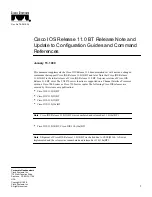
Definition Attributes
Data Definition Language (DDL) Reference Manual — 426798-002
6- 76
USAGE Clause
•
For TAL and FORTRAN source code, the DDL compiler translates the
COMPUTATIONAL clause into the type and scale appropriate to the language. The
data type for translation is based on the number of 9’s in the PICTURE:
See the TYPE clause discussion for the TAL and FORTRAN data types that
correspond to the BINARY types.
•
For TACL source code, the DDL compiler translates COMP data types into binary
data types corresponding to the data types generated for TAL, unless scale is
specified; DDL ignores scale when generating TACL binary data types.
•
If the PICTURE of a COMPUTATIONAL item contains the symbol V, the DDL
compiler calculates the appropriate
scale
.
•
For COBOL source code, translation is not needed unless the usage is
computational by default; that is, the item is described as TYPE BINARY.
•
For C source code, DDL translates COMP data types into short, unsigned short,
long, unsigned long, or double C data types.
•
For Pascal source code, DDL translates COMP data types into INT16, CARDINAL,
INT32, or INT64.
•
Appendix C, DDL Data Translation
, contains tables showing the host-language
data types generated from the DDL COMP data types.
•
You can specify INDEX only for a field definition or a field description.
•
COBOL output for USAGE IS INDEX is the direct translation of the DDL source
code, without generation of the storage specification or of any COBOL attributes
supported by DDL for the field definition or description.
DDL verifies the size of the field against the target language before generating the
COBOL output for the field. To match the COBOL storage allocation for index
names, the field must be a 4-byte computational item.
•
You cannot specify INDEX for a noncomputational picture storage or
character type.
•
A reference definition can refer to a field defined with INDEX, but DDL does not
generate COBOL output for the USAGE IS INDEX clause from the reference
definition.
•
You cannot specify a USAGE clause for a national data item.
Number of 9’s
Type
1 to 4
BINARY 16
5 to 9
BINARY 32
10 to 18
BINARY 64
















































